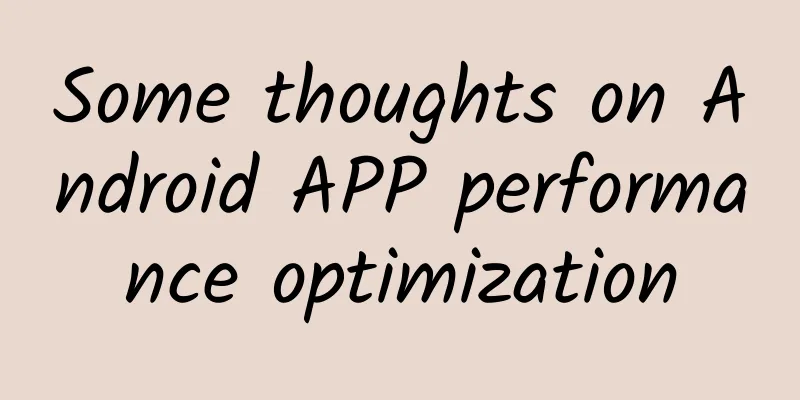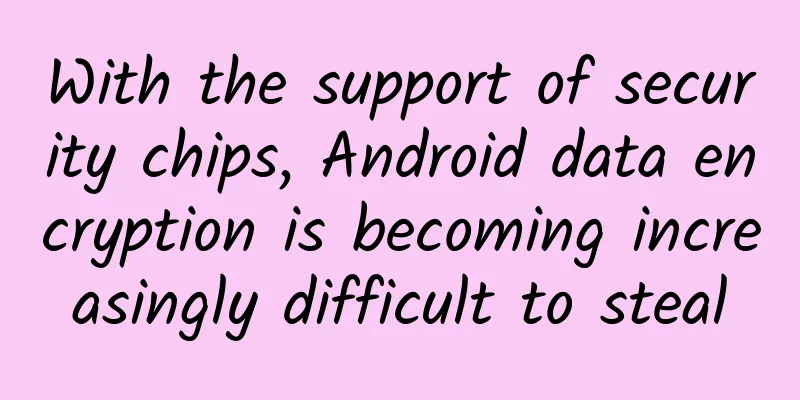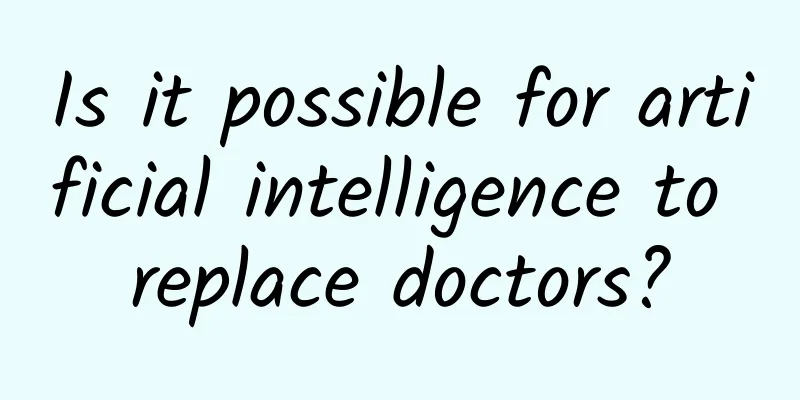Some thoughts on Android APP performance optimization

|
When it comes to Android phones, most people have the impression that they become a little slow after using them for a while. Some programs crash inexplicably during operation. When they open the system folder, they find that there are many more files. Then they use the mobile phone manager APP to continuously clean and optimize them, and then they feel that the running speed has increased a little. Even if the phone scores far ahead in various performance benchmarking software, it still feels that no matter how much memory space there is, it is far from enough. I believe that every user who uses the Android system has had similar experiences as above. Indeed, the Android system is not as smooth as the IOS system. Why? Obviously, when looking at the hardware configuration of the phone, Android devices will not lose to IOS devices, and are even stronger than it. The key lies in the software. There are many reasons for this phenomenon. A few points are simply listed as follows: In fact, in recent years, with the continuous iteration of Android versions, the Android system provided by Google has become more and more smooth. However, the Android phones used by most users in China are customized versions by major manufacturers, which are often not the latest native system kernel. Most of them may still remain in the older Android versions, and there are delays in updates. Since the Android system source code is open, anyone can modify the source code as long as they comply with the corresponding agreement. Therefore, domestic manufacturers transform the Android source code into their own systems for external release, such as the familiar Xiaomi mobile phone Miui system, Huawei mobile phone EMUI system, Oppo mobile phone ColorOS system, etc. Since each manufacturer has modified the Android native system source code, this will cause a problem, that is, the famous Android fragmentation problem, which is essentially that the application compatibility of different Android systems is different and cannot achieve consistency. Due to various Android fragmentation and compatibility issues, Android developers need to adapt to different systems when developing applications. At the same time, the development level of each Android developer is uneven, and the performance of the applications they write also has different types of problems, resulting in different user experiences during use. Then some problems will be converted into Android system problems by users, which in turn affects the evaluation of Android phones. Performance Optimization The focus of today's talk is Android APP performance optimization, that is, what points should be paid attention to when developing applications, and how to better improve the user experience. A good application, in addition to having attractive functions and interactions, should also have high requirements in terms of performance. Instant applications are very distinctive and may attract some users in the early stage of the product, but if the user experience is not good, it will also bring bad reputation to the product. So how should a good application be defined? There are mainly three aspects:
As we all know, as an operating system mainly for mobile devices, the Android system has certain limitations in hardware configuration. Although the configuration is becoming more and more advanced, it still cannot be compared with PC. When the CPU and memory are used unreasonably or consume too many resources, there will be stability problems caused by insufficient memory, and freezes caused by excessive CPU consumption. When faced with a problem, everyone thinks of contacting the user and then checking the logs, but they don’t know that the feedback about performance problems is also very difficult to find the cause, and logs are mostly useless. Why? Because most performance problems are non-essential problems, and it is difficult to locate the problem, and without key logs, of course, it is impossible to find the cause. These problems greatly affect the user experience and function usage, so it is very important to understand some performance optimization solutions, and optimize our applications in actual projects to improve user experience. Four aspects User experience performance issues can be summarized into four main categories:
What are the main causes of performance issues? There are similar and different reasons, but in the final analysis, they are nothing more than memory usage, code efficiency, appropriate strategy logic, code quality, installation package size and other issues. They are organized and classified as follows: As can be seen from the figure, building a high-quality application should aim at four directions: fast, stable, economical, and small.
To achieve these four goals, the specific implementation is the problems in the right box: lag, unreasonable memory usage, poor code quality, chaotic code logic, and too large installation package. These problems are also the most common problems encountered during the development process. When implementing business needs, you also need to take this into consideration and spend more time thinking about how to avoid optimization after the function is completed. Otherwise, the maintenance cost after the function is implemented will increase. Stuttering Optimization Android applications start slowly and often freeze when in use, which greatly affects the user experience and should be avoided as much as possible. There are many scenarios for freezing, which can be divided into four categories: UI drawing, application startup, page jump, and event response, as shown in the figure: The root causes of these four lag scenarios can be divided into two categories:
There are many reasons for lag, but no matter what the reason and scenario, it will eventually reach the user through the display on the device screen. In the final analysis, there is a problem with the display. Therefore, to solve the lag, you must first understand the display principle of the Android system. Android system display principle The Android display process can be simply summarized as follows: Android applications cache surface data after measurement, layout, and drawing, render the data to the display screen through SurfaceFlinger, and refresh the data through Android's refresh mechanism. In other words, the application layer is responsible for drawing, the system layer is responsible for rendering, and the data that the application layer needs to draw is passed to the system layer service through inter-process communication, and the system layer service updates the data to the screen through the refresh mechanism. We all know that there are three core steps in drawing each View in Android: Measure, Layout, and Draw. The specific implementation starts from the performTraversals() method of the ViewRootImp class. Both Measure and Layout obtain the size and position of the View through recursion, and take depth as priority. It can be seen that the deeper the hierarchy and the more elements, the longer it takes. The actual rendering of the data to be displayed on the screen is achieved through the SurfaceFlinger service in the system-level process. So what are the main tasks of this SurfaceFlinger service? As follows:
Since they are two different processes, a cross-process communication mechanism is definitely needed to realize data transfer. In the Android display system, Android's anonymous shared memory is used: SharedClient. A SharedClient is created between each application and SurfaceFlinger, and then in each SharedClient, up to 31 SharedBufferStacks can be created. Each Surface corresponds to a SharedBufferStack, which is a Window. A SharedClient corresponds to an Android application, and an Android application may contain multiple windows, namely Surface. That is to say, SharedClient contains a collection of SharedBufferStack, in which double buffering and triple buffering techniques are used in the display refresh mechanism. In summary, the overall display process is divided into three modules: the application layer draws to the buffer area, and SurfaceFlinger renders the buffer area data to the screen. Since they are different processes, Android's anonymous shared memory SharedClient is used to cache the data to be displayed to achieve the purpose. In addition, we need a term: FPS. FPS means the number of frames delivered per second. Ideally, 60 FPS will not feel stuck, which means that each drawing time should be within 16 ms. However, the Android system is likely to be unable to complete those complex page rendering operations in time. The Android system sends a VSYNC signal every 16ms to trigger the rendering of the UI. If each rendering is successful, the 60FPS required for a smooth picture can be achieved. If an operation takes 24ms, the system cannot render normally when it receives the VSYNC signal, so frame loss occurs. Then the user will see the same frame within 32ms. This phenomenon is more common when performing animations or sliding lists. It may also be that your Layout is too complex, with too many drawing units stacked, and it cannot be rendered in 16ms, which eventually causes untimely refresh. Root cause of jamming According to the display principle of Android system, the fundamental reasons affecting drawing are as follows:
If drawing takes too long, there are some tools that can help us locate the problem. If the main thread is too busy, you need to pay attention. The main thread's key responsibilities are to handle user interactions, draw pixels on the screen, and load display-related data, so it is particularly important to avoid anything that happens on the main thread so that the application can remain responsive to user operations. In summary, the main thread mainly does the following:
In addition, you should try to avoid putting other processing in the main thread, especially complex data calculations and network requests. Performance analysis tools Performance issues are not easy to reproduce or locate, but if you encounter a problem, you still need to solve it. To analyze the problem and confirm whether it is solved, you need to use corresponding debugging tools, such as Hierarchy View of the Layout hierarchy, GPU Profile tool on the Android system, and static code checking tool Lint. These tools play a very important role in performance optimization, so you need to be familiar with them and know what tools to use for analysis in what scenarios. 1. Profile GPU Rendering In the mobile developer mode, there is a freeze detection tool called: Profile GPU Rendering, as shown in the figure: Its features are as follows:
2. TraceView TraceView is a tool that comes with the Android SDK. It is used to analyze the function call process and can perform performance analysis on Android applications and Framework layer codes. It is a graphical tool that will eventually generate a chart to illustrate the performance analysis. It can analyze the execution time of each method, including the number of times the method is called and the number of recursions, the actual duration and other parameter dimensions. It is very intuitive to use and very convenient to analyze performance. 3. Systrace UI performance analysis Systrace is a performance data sampling and analysis tool provided by Android 4.1 and above. It returns some information from the perspective of the system. It can help developers collect operating information of key Android subsystems, such as surfaceflinger, WindowManagerService and other key modules of the Framework, services, and View systems, so as to help developers more intuitively analyze system bottlenecks and improve performance. Systrace's functions include tracking system I/O operations, kernel work queues, CPU load, etc., and provides good data for UI display performance analysis, especially for problems such as animation playback not being smooth and rendering stuck. Optimization suggestions 1. Layout optimization Whether the layout is reasonable mainly affects the page measurement time. We know that the display measurement and drawing process of a page are completed through recursion. The time of multi-branch tree traversal is related to the height h of the tree, and its time complexity is O(h). If the level is too deep, each additional layer will increase the page display time, so the rationality of the layout is very important. So what are the methods for layout optimization? They mainly start from three aspects: reducing the number of layers, reducing the measurement and drawing time, and improving reusability. The summary is as follows:
Use wrap_content as little as possible. wrap_content will increase the calculation cost when measuring layout. When the width and height are known to be fixed values, do not use wrap_content. Delete unnecessary properties from the control. 2. Avoid overdrawing Overdrawing means that a certain pixel on the screen is drawn multiple times within the same frame. In a multi-layer overlapping UI structure, if the invisible UI is also drawing, some pixel areas will be drawn multiple times, thus wasting extra CPU and GPU resources. How to avoid overdrawing?
3. Startup optimization By monitoring the startup speed, we can find out the problems that affect the startup speed, optimize the startup logic, and improve the startup speed of the application. The startup mainly completes three things: UI layout, drawing, and data preparation. Therefore, startup speed optimization requires optimizing these three processes:
4. Reasonable refresh mechanism During application development, due to data changes, the page needs to be refreshed to display new data. However, frequent refreshes increase resource overhead and may cause freezes. Therefore, a reasonable refresh mechanism is needed to improve the overall UI fluency. Reasonable refreshes require the following points:
5. Others When implementing animation effects, you need to choose the appropriate animation framework according to different scenarios. In some cases, hardware acceleration can be used to provide smoothness. Memory optimization In the Android system, there is a garbage memory recovery mechanism, which automatically allocates and releases memory at the virtual machine layer. Therefore, there is no need to allocate and release a certain piece of memory in the code. From the application level, it is not easy to have problems such as memory leaks and memory overflows, but memory management is required. The Android system has a Generational Heap Memory model for memory management. Most of the pressure of memory recovery does not need to be concerned by the application layer. Generational Heap Memory has its own set of management mechanisms. When the memory reaches a threshold, the system will automatically release the memory that the system thinks can be released according to different rules. It is precisely because the Android program has handed over the power of memory control to Generational Heap Memory that once there are problems with memory leaks and overflows, troubleshooting will become an extremely difficult task. In addition, some Android application developers do not pay special attention to the reasonable use of memory during the development process, nor do they do too much optimization in terms of memory. When the application runs more and more tasks at the same time, coupled with more and more complex business needs, relying entirely on Android's memory management mechanism will lead to a series of performance problems gradually appearing, which will have an unignorable impact on the stability and performance of the application. Therefore, it is very necessary to solve memory problems and reasonably optimize memory. Android memory management mechanism Android applications are all run on the Android virtual machine, and the memory allocation and garbage collection of the application are all completed by the virtual machine. In the Android system, the virtual machine has two operating modes: Dalvik and ART. 1. Java object life cycle Generally, Java objects have 7 running stages on the virtual machine:
2. Memory allocation In the Android system, memory allocation is actually the allocation and release of the heap. When an Android program is started, the application process is derived from a process called Zygote. After the system starts the Zygote process, in order to start a new application process, the system will derive the Zygote process to generate a new process, and then load and run the application code in the new process. Among them, most of the RAM pages are used to allocate to the Framework code, and at the same time enable RAM resources to be shared among all application processes. However, in order to control the memory of the entire system, the Android system sets a hard Dalvik Heap Size maximum limit for each application. The entire threshold varies on different devices due to different RAM sizes. If the application's memory space is close to the entire threshold, it is easy to cause a memory overflow error if it tries to allocate memory. 3. Memory recycling mechanism What we need to know is that in Java, memory is divided into three areas: Young Generation, Old Generation, and Permanent Generation. Recently allocated objects are stored in the Young Generation area. Objects trigger GC to recycle garbage at a certain time, and those that are not recycled may be moved to the Old Generation according to different rules, and finally moved to the Permanent Generation area after accumulating a certain period of time. The system will perform different GC operations according to different memory data types in the memory. GC determines whether to collect objects by determining whether the objects are referenced by active objects, and then dynamically recycles the memory space occupied by objects without any references. However, it should be noted that frequent GC will increase the jamming of the application and affect the fluency of the application. Therefore, it is necessary to minimize the system GC behavior in order to improve the fluency of the application and reduce the probability of jamming. Memory analysis tools Before performing memory optimization, you need to understand the current memory usage status of the application, analyze which data types have problems based on the status, the distribution of various types, and how to find out which specific objects are causing the problem after discovering the problem. This requires relevant tools to help us. 1. Memory Monitor Memory Monitor is a very simple graphical tool that can monitor the memory usage of the system or application. It has the following functions:
2. Heap Viewer The main function of Heap Viewer is to view the usage of different data types in memory. You can see the Heap Size of the current process, what types of data are there, and the proportion of each type of data. By analyzing these data, you can find large memory objects, and then further analyze these large objects to reduce memory overhead through optimization. You can also find memory leaks through data changes. 3. Allocation Tracker Both Memory Monitor and Heap Viewer can monitor memory usage intuitively and in real time, and can also detect memory problems, but after discovering memory problems, you cannot further find the cause, or find an abnormal memory, but cannot distinguish whether it is normal. At the same time, after discovering the problem, you cannot locate the specific class and method. At this time, you need to use another memory analysis tool, Allocation Tracker, for more detailed analysis. Allocation Tracker can allocate and track the memory allocation of the application, and list their call stacks, so that you can view the memory allocation cycle of all objects. 4. Memory Analyzer Tool (MAT) MAT is a fast, feature-rich Java Heap analysis tool that analyzes the memory snapshot HPROF of the Java process, analyzes a large number of objects, quickly calculates the size of objects in memory, and sees which objects cannot be reclaimed by the garbage collector. It can also visually view the objects that may cause this result. Common memory leak scenarios If you wait until after a memory leak occurs to find the cause and fix it, it will increase the cost of development. It is best to consider memory issues well when writing code and write higher quality code. Here are some common memory leak scenarios that need to be avoided in future development processes.
In addition, memory leaks can be monitored. The most common method is to use the LeakCanary third-party library, which is an open source library for detecting memory leaks. It is very simple to use and can issue an alarm when a memory leak occurs. It can also generate a leak tarce to analyze the leak location and provide a dump file for analysis. Optimize memory space The absence of memory leaks does not mean that memory does not need to be optimized. On mobile devices, due to the limited storage space of physical devices, the Android system also allocates limited heap memory to each application process. Therefore, using the smallest memory objects or resources can reduce memory overhead and allow GC to more efficiently recycle objects that are no longer needed, so that the application heap memory maintains sufficient available memory and allows the application to run more stably and efficiently. Common practices are as follows:
Stability optimization The definition of Android application stability is very broad. There are many reasons that affect stability, such as unreasonable memory usage, incomplete consideration of code exception scenarios, unreasonable code logic, etc., which will affect the stability of the application. The two most common scenarios are: Crash and ANR. These two errors will make the program unusable. The more common solutions are as follows:
Power consumption optimization In mobile devices, the importance of battery is self-evident. Without power, nothing can be done. For operating system and device developers, power consumption optimization has never stopped in pursuit of longer standby time. However, for an application, the issue of power usage cannot be ignored, especially for those applications that are classified as "battery killers", which will eventually be uninstalled. Therefore, application developers need to minimize power consumption while meeting their needs. Before Android 5.0, testing power consumption in applications was troublesome and inaccurate. After 5.0, an API was introduced to obtain power consumption information on the device: Battery Historian. Battery Historian is an Android system power analysis tool provided by Google. Like Systrace, it is a graphical data analysis tool that intuitively displays the power consumption process of the phone. By inputting a power analysis file, it displays the consumption and finally provides some reference methods for power optimization. In addition, there are some common solutions available:
Optimize the installation package size The size of the application installation package has no effect on the use of the application, but the larger the application installation package, the higher the threshold for users to download it. Especially in the case of mobile networks, users have higher requirements for the size of the installation package when downloading applications. Therefore, reducing the size of the installation package can make more users willing to download and experience the product. The composition of common application installation packages is shown in the figure: From the figure we can see:
Common solutions to reduce the size of the installation package
summary Performance optimization cannot be solved by updating one or two versions. It is a continuous demand, continuous integration and iterative feedback. In actual projects, at the beginning of the project, due to manpower and project completion time constraints, the priority of performance optimization is relatively low. When the project enters the commissioning stage, the priority needs to be increased. However, in the early stage of the project, when designing the architecture plan, performance optimization points also need to be considered in advance, which reflects a programmer's technical skills. Whenever there is a need for performance optimization, it usually starts with discovering the problem, analyzing the cause and background of the problem, and then finding the best solution and finally solving the problem. This is also a processing method often used in daily work. |
>>: Android Framework Problem Analysis Case - Who Killed the Desktop?
Recommend
Microsoft optimizes Teams Shifts app to send shift notifications to designated employees
On August 8, Microsoft officially released a blog...
China Association of Automobile Manufacturers: Economic Operation of the Automobile Industry in November 2022
In November 2022 , China's automobile product...
Ipad illustration course for students will be completed in May 2021 [HD quality with brush materials]
Ipad illustration course for students will be com...
Operation and promotion: refined omni-channel operation plan!
I’ve spent a lot of money on advertising, but why...
Event promotion planning!
Activities are a very important way to quickly at...
IDC: China's medical cloud infrastructure service market size will reach RMB 7.01 billion in 2022, a year-on-year increase of 44.6%
China's medical cloud is in a period of rapid...
219,000 units! SAIC's new energy vehicle sales hit a record high
(Shanghai, January 1, 2024) According to prelimin...
The tragedy of Renren Games: How a gaming company once worth 10 billion yuan was ruined
Tencent is undoubtedly the current leader in the ...
5 common methods to improve user retention!
In the current context where it is difficult and ...
Smart TVs have entered the deep waters. How can we make useless functions more practical?
With the impact of the Internet on the traditiona...
A woman temporarily lost her eyesight after staying up late to watch TV series! Many people are still making these mistakes...
Expert of this article: Li Zongou, Master of Opht...
Can't stop eating melon seeds? Your melon seed addiction is not entirely your fault!
Melon seeds, as the well-deserved king of nationa...
How many people's New Year DNA is touched by a bite of preserved meat? Stroke patients should be more careful about "delicious traps"
As the Year of the Snake approaches, bacon is a p...
How much does a 400 call cost and what does it include?
When many companies apply for 400 telephone numbe...
Qingming Outing Season | How to have fun in the wild safely? Check out these emergency tips!
Audit expert: Luo Huachun Editor-in-Chief of Citi...









